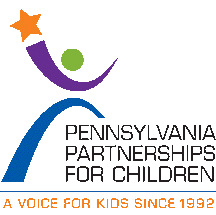
By: January Contreras, Assistant Secretary, Administration for Children and Families and CMS Administrator Chiquita Brooks-LaSure
The Medicaid “continuous enrollment” period is ending. As trusted community voices, you can help millions of children and families stay connected to affordable, comprehensive care through Medicaid and the Children’s Health Insurance Program (CHIP), Medicare, the Health Insurance Marketplaces, or employer-sponsored coverage.
With your partnership, we can maximize our outreach and ensure people experience smooth coverage transitions. This blog explains where we are now and what you can do to help.
Where We Are Now
During the COVID-19 pandemic, Medicaid served its core purpose of providing reliable health coverage to millions of individuals and families during unprecedented circumstances. Individuals could count on having stable health coverage during the pandemic, regardless of changes in income or other circumstances, because of a “continuous enrollment” provision. This continuous enrollment provision is now coming to an end, and states must return to normal eligibility and enrollment operations.
This means that states will redetermine eligibility for each person currently covered by Medicaid or CHIP – a total of 91 million people – between April 1, 2023 and July 31, 2024. You can find the anticipated timeline for each state at Medicaid.gov/unwinding.
The Biden-Harris Administration is committed to engaging with states and community partners throughout this process to support individuals’ and families’ access to coverage and care. States are working to simplify and streamline processes, connect people to the Health Insurance Marketplaces, and adopt other innovative approaches. But we need your help to reach every person who may be affected by this process and help them maintain their health coverage or enroll in a new plan.
What You Can Do
The Administration for Children and Families (ACF), the Centers for Medicare & Medicaid Services (CMS), and other federal agencies are working together to recruit partners like you to help people stay connected to health care coverage. There are several ways to help.
First, it’s critical that state Medicaid programs have accurate contact information for the children, individuals, and families enrolled in Medicaid and CHIP. We need your assistance to share key messages to help people stay covered. Families and individuals should:
- Update their contact information with their state Medicaid or CHIP office. You can find state-specific contact information at Medicaid.gov/renewals.
- Check their mail. The state will mail a letter about coverage, which will let them know if they need to complete a renewal form to see if they still qualify for Medicaid or CHIP.
- Complete their renewal form (if they get one). Fill out the form and return it to their state right away to help avoid a gap in coverage.
You can find these messages available in English, Spanish, Chinese, Hindi, Korean, Tagalog, and Vietnamese, at Medicaid.gov/unwinding.
Second, you can amplify our message and help people learn the actions they need to take to keep health care coverage. Below are several strategies to consider:
- Ensure front-line staff are knowledgeable on steps families can take to renew their health care coverage. For example, they can help patients understand the 90-day reconsideration period.
- Promote Medicaid and CHIP renewal awareness on your websites, social media channels, and in your physical offices. You can use our Medicaid Unwinding Toolkit graphics (English and Spanish).
- Share key information on Medicaid and CHIP renewal as part of your application intake or renewal process for other programs. You can also tell people about their other health care coverage options, like HealthCare.gov and Medicare.gov.
Your work will help people enrolled in Medicaid and CHIP take the necessary actions to stay connected to health care coverage. We are counting on ACF and CMS partners to be a part of our nationwide effort to ensure no one is left behind when it comes to health care.
Thank you for your continued collaboration to promote the well-being of children, youth, families, and communities.
Other helpful resources:
Beyond the Basics released two sets of frequently asked questions (FAQ) on unwinding Medicaid continuous coverage. The first set explains how unwinding the Medicaid continuous coverage requirement will work, the challenges Medicaid beneficiaries may face during the process, and what enrollment assisters such as health centers can do to help. The second set offers outreach and enrollment tips to assist people to retain coverage.





